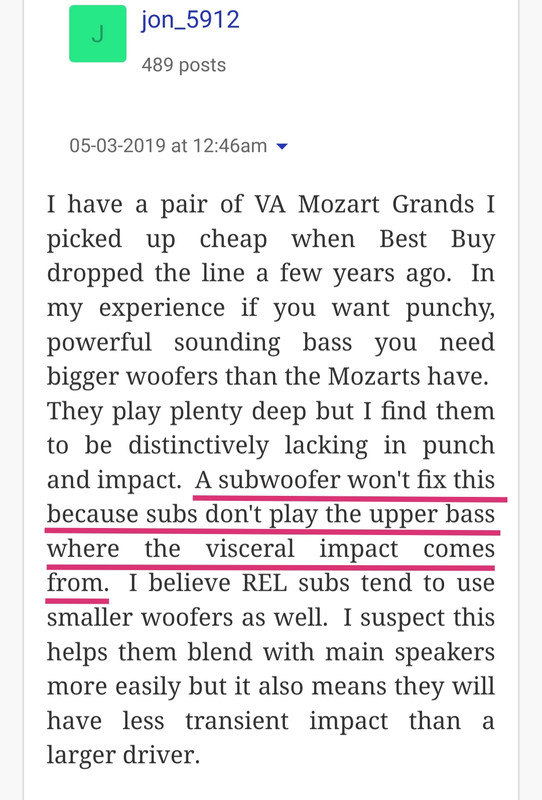@phusis 1+. Live concerts are in much larger venues than a residential room. Bass is much less of a problem in larger venues. Then you have to deal with echoes which can be profound. We really do not have echoes in our homes or rather very little. The distances are too short which makes the delay shorter. We have difficulty with reflections which can be perceived as part of the music then as a distortion of the original signal.
There are very few systems that could not benefit from subwoofers. My goal is to save people, who want to get into them, time and maybe some aggravation. I have always used a two way crossover, always, right from the beginning. I had a single sub for 6 months when I discovered that one was not going to do it. This lasted for 22 years and as I said before it was a love/hate relationship and at times very frustrating. 22 years later TacT entered the market and I jumped right one, their 1st preamp and I upgraded to another one down the line. The results floored me. Then I realized that I needed 4 subwoofers, next is 8. The TacTs time has come to an end as there is now better tech out there. I thought I was going to get a Trinnov unit but I am waiting to see what the next high end DEQX unit is going to like. It is supposed to be released next quarter. The company has not yet released an owners manual so I can get a handle on it's capability. But, from the outside it looks great.
The point of all this is that if you start out with two subs and a digital crossover like the MiniDSP you will saving yourself a lot of time, frustration and expense. Don't do it cheap. Do it right. On the other hand if you have to learn the hard way like I did fire away. You will learn a lot in the end.


